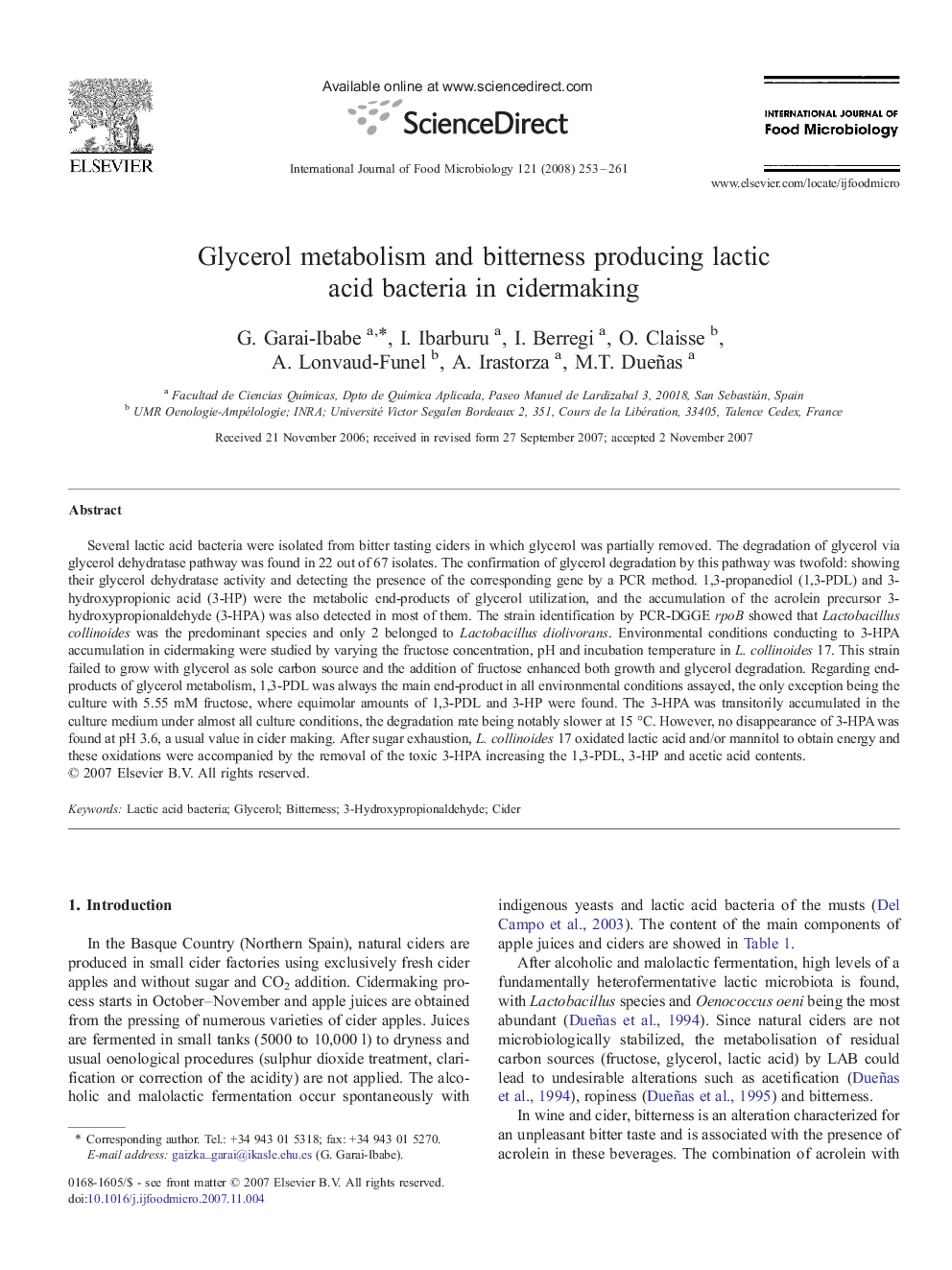| Article ID | Journal | Published Year | Pages | File Type |
|---|---|---|---|---|
| 4369275 | International Journal of Food Microbiology | 2008 | 9 Pages |
Several lactic acid bacteria were isolated from bitter tasting ciders in which glycerol was partially removed. The degradation of glycerol via glycerol dehydratase pathway was found in 22 out of 67 isolates. The confirmation of glycerol degradation by this pathway was twofold: showing their glycerol dehydratase activity and detecting the presence of the corresponding gene by a PCR method. 1,3-propanediol (1,3-PDL) and 3-hydroxypropionic acid (3-HP) were the metabolic end-products of glycerol utilization, and the accumulation of the acrolein precursor 3-hydroxypropionaldehyde (3-HPA) was also detected in most of them. The strain identification by PCR-DGGE rpoB showed that Lactobacillus collinoides was the predominant species and only 2 belonged to Lactobacillus diolivorans. Environmental conditions conducting to 3-HPA accumulation in cidermaking were studied by varying the fructose concentration, pH and incubation temperature in L. collinoides 17. This strain failed to grow with glycerol as sole carbon source and the addition of fructose enhanced both growth and glycerol degradation. Regarding end-products of glycerol metabolism, 1,3-PDL was always the main end-product in all environmental conditions assayed, the only exception being the culture with 5.55 mM fructose, where equimolar amounts of 1,3-PDL and 3-HP were found. The 3-HPA was transitorily accumulated in the culture medium under almost all culture conditions, the degradation rate being notably slower at 15 °C. However, no disappearance of 3-HPA was found at pH 3.6, a usual value in cider making. After sugar exhaustion, L. collinoides 17 oxidated lactic acid and/or mannitol to obtain energy and these oxidations were accompanied by the removal of the toxic 3-HPA increasing the 1,3-PDL, 3-HP and acetic acid contents.
